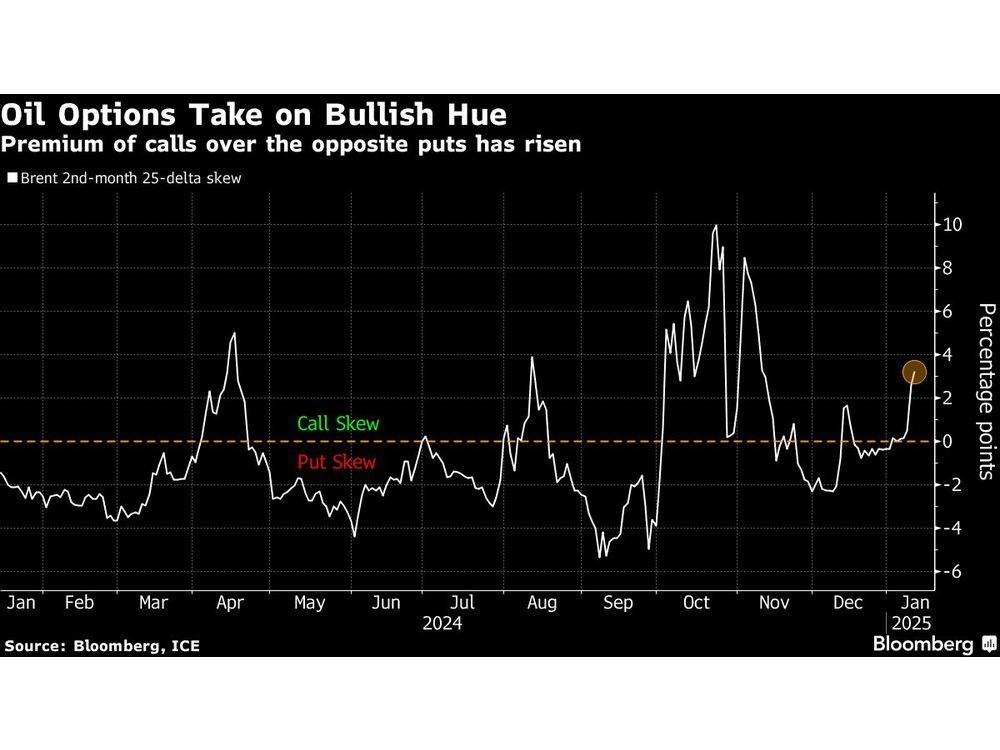
Article content
(Bloomberg) — Oil extended gains to hit the highest in more than four months as a fresh wave of US sanctions against Russia’s energy industry threatened to crimp supplies in an already-tightening global market.
Article content
Global benchmark Brent advanced above $81 a barrel, after surging almost 4% in the previous session. West Texas Intermediate was near $78. The US imposed its most aggressive and ambitious sanctions yet on Russia’s oil industry on Friday, targeting two large exporters, insurance companies, and more than 150 tankers.
Article content
The sweeping moves — which came less than two weeks before US President-elect Donald Trump takes office — throw a spotlight on key markets in India and China, with refiners there potentially being forced to seek alternative supplies. India emerged as a vital importer of Russian crude in the aftermath of Moscow’s 2022 invasion of Ukraine, and China is the world’s largest oil importer.
Crude has rallied strongly in recent weeks, with gains spurred by colder weather, falling US stockpiles, and speculation that Trump officials may tighten sanctions against flows from Iran in the coming months. The broad sanctions package from the outgoing Biden administration threatens to roil the market further, while complicating policy for the OPEC+ alliance, which plans to start loosening output curbs later this year after a series of delays.
The jump in oil prices may also provide a fresh challenge for central bankers, including the Federal Reserve, if it leads to stickier inflation. Investors have been scaling back their expectations for the pace of interest-rate cuts from the Fed this year, with the US economy proving to be robust and price pressures lingering.
Article content
Citigroup Inc. said that up to 30% of Russia’s so-called shadow fleet of tankers could be affected, threatening as much as 800,000 barrels a day, although the effective loss may be less that half that figure. Goldman Sachs Group Inc. said it hadn’t changed its expectations for Russian supply as crude could be priced even more cheaply to incentivize buying.
Global oil balances should “call for stable, not soaring oil prices as non-OPEC and non-Russian production is expected to comfortably keep pace with demand,” said Vishnu Varathan, head of economics and strategy at Mizuho Bank Ltd. “Russian oil could leach into global supplies despite the sanctions — a move that has been re-run many times.”
With price swings picking up, parts of the so-called paper market have been flashing warning signals. Oil options have regained a bullish hue, with a gauge of implied volatility rising as skews increased their bias toward call options as of Friday’s close. Timespreads have also surged.
There have been signs that Russian supplies were already under pressure in recent weeks, with the nation’s seaborne crude exports estimated to have slumped to the lowest since August 2023. In Asia, meanwhile, some refiners in India and China have been increasing purchases from the Middle East and the Atlantic Basin amid concern that further restrictions on imports from Russia and Iran may crimp access to supplies.
To get Bloomberg’s Energy Daily newsletter in your inbox, click here.
Share this article in your social network